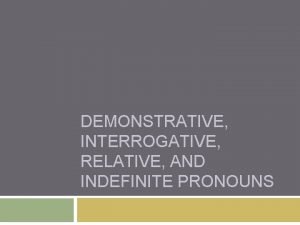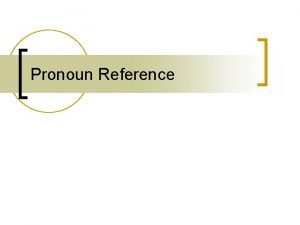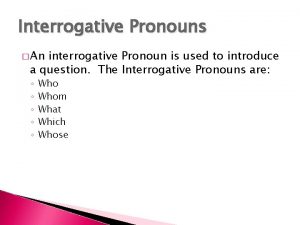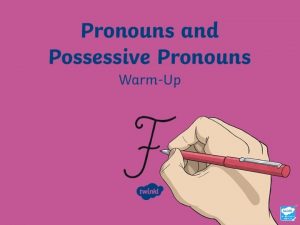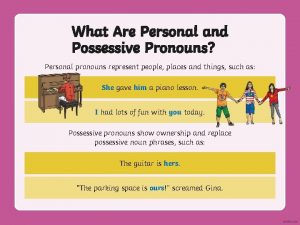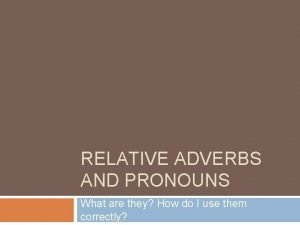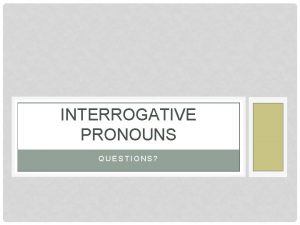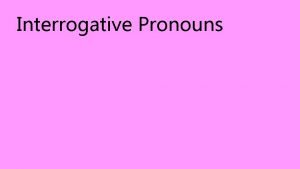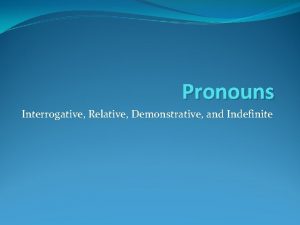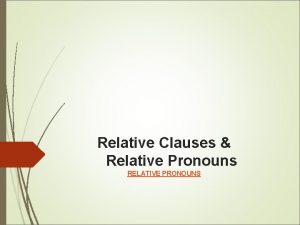POSSESSIVE PRONOUN INTERROGATIVE PRONOUN RELATIVE PRONOUN Possessive pronouns








- Slides: 8

POSSESSIVE PRONOUN INTERROGATIVE PRONOUN RELATIVE PRONOUN

Possessive pronouns are pronouns that indicate possession, or ownership. Here are the examples: � That suitcase isn’t mine. � Yours was the best essay in the class. � Never take his. � Don’t touch theirs.

SUBJECT PRONOUN POSSESSIVE PRONOUN I MINE YOURS THEY THEIRS WE OURS SHE HERS HE HIS IT ITS

What do you notice about the underlined words in the following sentences? � Who went first? � What was the man carrying? � Which did you buy? The underlined words are called INTERROGATIVE PRONOUNS.

You may be wondering why these are considered to be pronouns. Like other pronouns, interrogative pronouns represent something else, often a noun. They present missing information. � Who went first? � Harry went first. � What was the man carrying? � The man was carrying a camera.

HOW WHAT WHEN WHERE WHICH WHOM WHY

Look at the differences: INTERROGATIVE PRONOUN RELATIVE PRONOUN • Who was laughing? • Whose is this? q I like the woman who lives next door. q He is the engineer whose life was disrupted by a messy divorce. You’ve probably noticed that, unlike interrogative pronouns, sentences of relative pronouns are not questions. The same pronouns are being used, but not to ask a question. Instead, these pronouns are used to replace a noun that is already mentioned earlier in the sentence. Common relative pronouns: THAT, WHICH, WHOM, WHOSE.

1. 2. 3. 4. Make three sentences by using any possessive pronouns you choose. Make three sentences by using interrogative pronouns. Make four sentences by using relative pronouns. Underline those three types of pronouns.
 Interrogative possessive pronoun
Interrogative possessive pronoun Pronouns interrogative relative demonstrative indefinite
Pronouns interrogative relative demonstrative indefinite Object pronoun
Object pronoun Interrogative pronouns examples
Interrogative pronouns examples Demonstrative pronouns and interrogative pronouns
Demonstrative pronouns and interrogative pronouns Personal pronouns and possessive pronouns
Personal pronouns and possessive pronouns What is personal pronoun and possessive pronouns
What is personal pronoun and possessive pronouns Examples of relative adverbs
Examples of relative adverbs Stage 15 relative clauses and relative pronouns
Stage 15 relative clauses and relative pronouns

